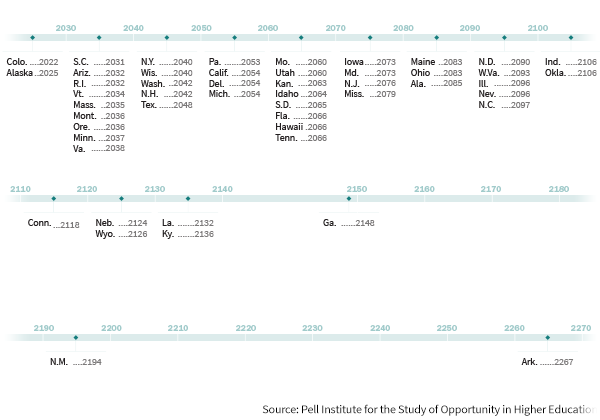Bloomberg Businessweek
How States Are Shifting College Costs to Students
Beneath the ever-rising mountain of student debt lies a core question of
values and priorities. College degrees benefit both students and society,
providing paths to higher personal incomes and broader economic growth—but whofs
responsible for covering the cost of that investment? A new report shows how in
many ways, states have already answered that question. Theyfre passing the bill
on to families rather than to taxpayers at large.
The Chronicle of Higher Educationfs report
looks at the decades-long erosion of support for higher education. It charts how
public colleges were once seen as gworthy of collective investment for the
greater goodh but increasingly have been viewed as just benefiting individual
students, who gought to foot the bill themselves.h
This shift in public attitudes goes hand in hand with declining state support
for schools, both reflecting tighter budgets and changing priorities about
whatfs worthy of funding. The Chronicle reports
how, for example, a victory for auto dealers in South Carolina imposing a cap on
sales taxes cost the state gan estimated $169 million last year, which would be
sufficient to restore about half of the cuts made to public colleges since
2008.h
The report also highlights analysis
from the the Pell Institute for the Study of Opportunity in Higher Education
that shows if the funding trends since 1980 continue, some states could stop
supporting higher ed entirely within the decade. Colorado could be first,
reaching $0 in 2022, followed by Alaska two years later. In the 2030s, another
nine states could join them, including Virginia, Massachusetts, and Oregon.
Herefs the Chroniclefs chart showing
the timeline when funding could dry up in different places:

The Chronicle of Higher Education
Despite tales of rock climbing walls and bloated administrations, public
colleges overall havenft
changed over the past two decades how much they spend to educate each
student. With costs flat, public funding down, and public colleges asking
students to fund the shortfall in revenue, the education inequality gap will
further widen, the Chronicle argues.
That means leaving behind students who would have gone to college, found good
jobs, started businesses, paid taxes, and generally helped to drive the economy.
An undereducated workforce isnft cheap. States that think theyfre saving money
by saying higher education is a personal rather than collective investment will
wind up paying for the consequences.

The Chronicle of Higher Education
Weise
is a reporter for
Bloomberg Businessweek in New York. Follow her on
Twitter
@kyweise.